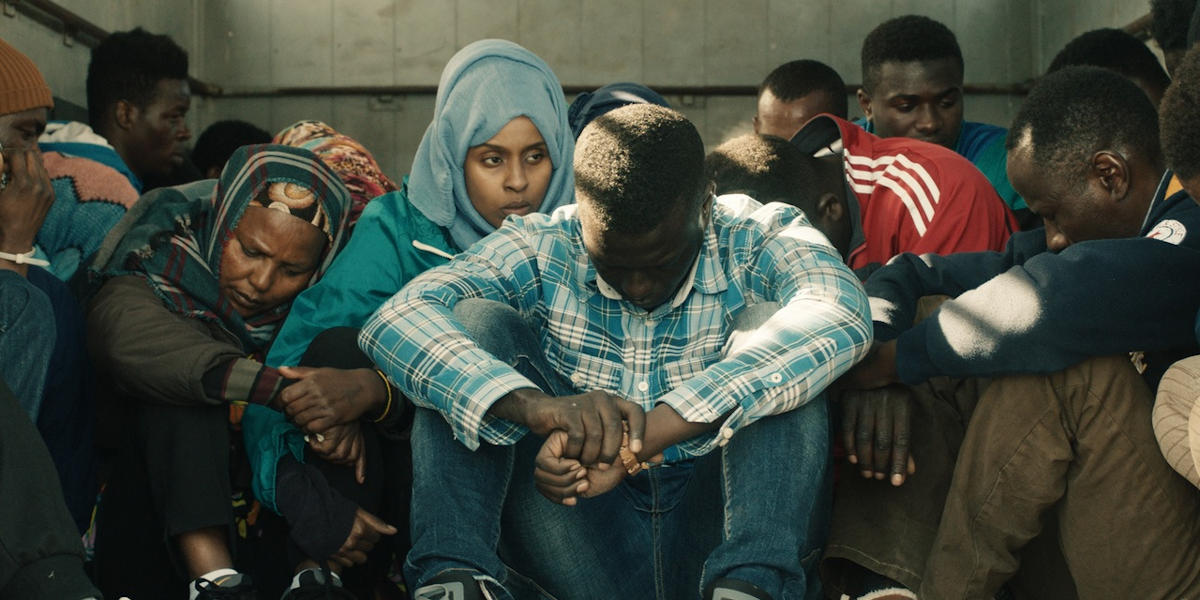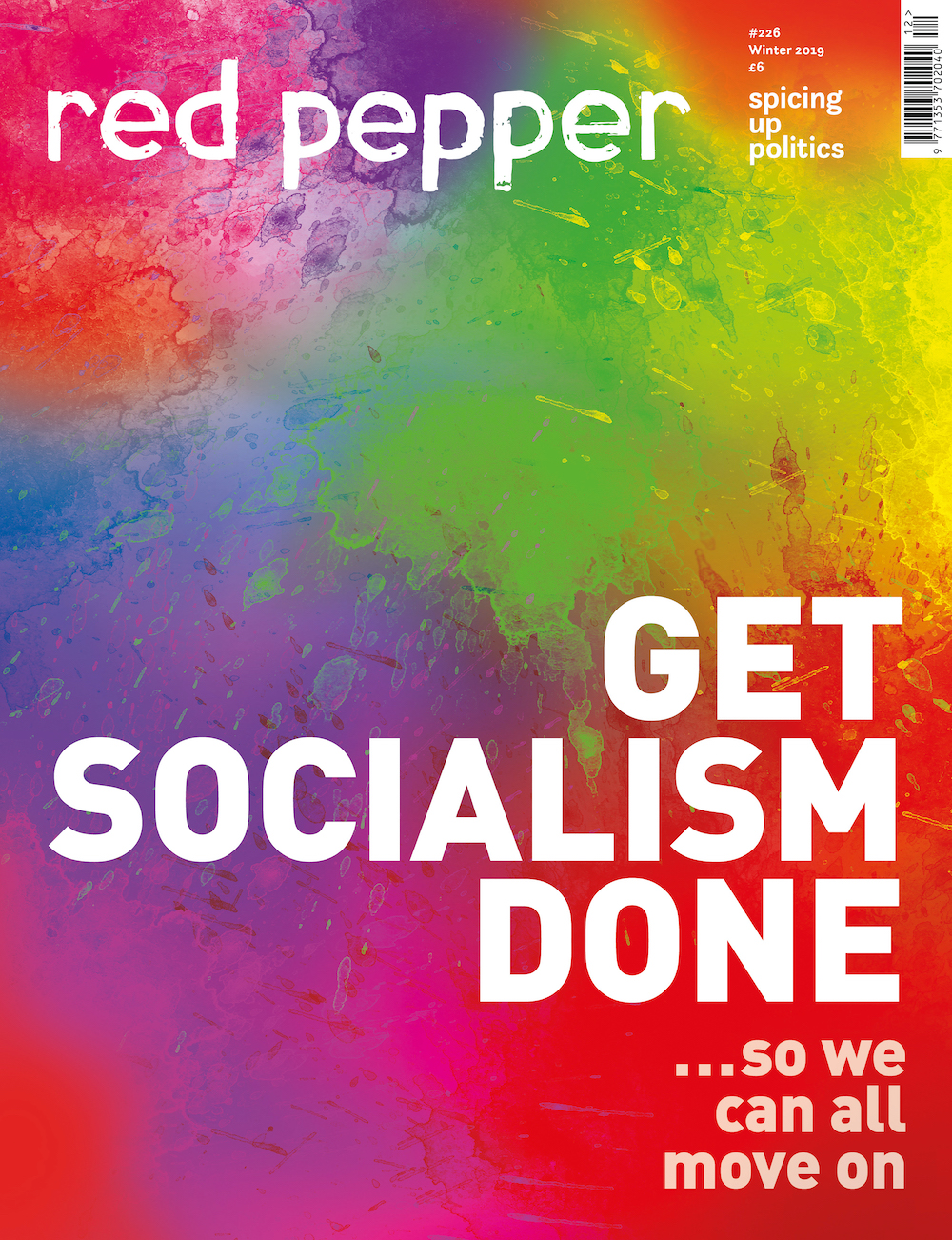At the London Migration Film Festival (LMFF), we have found that people most commonly associate the term ‘migration’ with politics and tragedy. For example, when we approached a new venue with the hopes of holding screenings there during the second LMFF, we were told ‘a policy of political neutrality’ meant they ‘could not collaborate with a migration festival’.
This was in 2017, at the peak of the so-called refugee crisis – the real crisis was one of migration management, in which the fallacy underpinning ‘Fortress Europe’ became untenable. Then, the daily news showed borders in a visual display of state sovereignty that highlighted which ones people were not permitted to cross – and the consequences for them if they tried.
Through this ‘border spectacle’ we saw how people on the move were too often framed by mainstream media and politicians in dehumanising binaries: either as threats or as victims; passive or active; the ‘good refugee’ who must be saved or the bad ‘economic migrant’ coming to steal jobs. They were never seen as people with complex stories and meaningful existence beyond the act of moving. ‘Migrant’ was the only permitted identity, with people reduced to objects, rather than subjects, of popular narratives.
The hyper-focus on suffering or on the ‘problem’ posed by people on the move centred on sea crossings, even though the vast majority of people claiming asylum crossed borders on planes and with valid visas in their passports. Arrivals to Europe (as to the UK) via makeshift boats has always been – and still are – only a fraction of the whole picture.
It becomes the only story told because it makes for excellent fodder for fearmongering, is compelling ‘trauma porn’ and reinforces the idea that not only is the global north the most desirable and safe part of the world but it also faces an ‘invasion’. This narrative has been a key tenet of populist campaigning across the world, framed as a political battle and contributing to, for example, support for this year’s Nationality and Borders Act.
LMFF was born to counter these dehumanising narratives, and to instead platform films that reassert the humanity of migration and portray migrants as people, no more or less. This orientation has guided our programming choices. Increasingly, we have found fiction to be a powerful tool in changing how audiences view the realities of migration.
The power of fiction
In recent years we have seen the narrative on migration grow and change, alongside how filmmakers approach the subject, which is as vast as the human experience. Everyone is affected by migration in some way, and there are endless stories that can be told about it.
Through LMFF, we have also seen how stories about people on the move can transform how people think about migration. Films can normalise migration as an act, as a life choice, or as something foundational to the societies we live in. Fiction particularly allows the viewer to see the world from a new perspective, to hear people’s inner voices and feelings, and to feel themselves. In doing so, films can move viewers beyond seeing migrants as mere political objects. If well-made, films can contain subjectivity, nuance and emotion in a way that is often inaccessible in other media.
For example, in Lina from Lima (2019), Lina is not only a Peruvian domestic worker living in Chile. She is an empowered, resourceful woman able to find solutions to unforeseen problems while singing and dancing alongside a crew of Quechuan performers. Although viewers may fear that the worst is yet to come for Lina, her story is anything but that of the archetypal tragic, helpless migrant woman.
Khaled, from The Other Side of Hope (2017), is not just a Syrian refugee. He’s a brother, a friend and a waiter working in a tired Finnish tavern and a questionable sushi restaurant. The film’s absurdist humour is a proxy for the absurdity of his situation as a refugee, a framing that refuses to patronise Khaled or diminish his experiences.
Everyone is affected by migration in some way and there are endless stories that can be told about it
Mary is not only the wife of a British-Pakistani man. In After Love (2020), she’s grieving the death of her husband while trying to find his ‘other woman’, with whom he built a parallel family across the Channel. If a story like this were told in a documentary, the examination of grief would likely be voyeuristic at best and re-traumatising at worst.
Films can draw us close to characters and create an emotional bond with them that bypasses politically-driven reasoning. This is certainly the case in fact-based fiction Europa (2021), in which we follow Kamal, close up and in real time, as he desperately flees from fascist militias hunting refugees who cross the Turkish-Bulgarian border.
Fiction can also portray places and feelings documentaries couldn’t possibly access, such as the detention camps of The Order of Things (2017), trapping people in Libya, and its portrayal of European bureaucrats who decide to finance those camps from afar. The reality that governments spend billions to keep people on the move far from Fortress Europe, rather than use the money to benefit those already in their countries, is a side of the migration story that rarely gets told.
Beyond suffering
Migration films have proliferated over recent years, thankfully growing beyond the trite genre of ‘trauma porn’ and the post-colonial gaze. Inventive stories of migration have been told in sci-fi, horror, rom-coms and musicals, transporting viewers into the lives of refugees who can fly (Jupiter’s Moon, 2017), or traumatised families placed in haunted housing (His House, 2020), or teenagers making goofy attempts at sexual experiences (Bangla, 2019).
Studios and distributors, driven by profits, consumerism, and international audiences, haven’t sat on the sidelines observing this trend: Netflix and other major streaming platforms are acquiring and producing an ever-growing number of films and series featuring the lives of people on the move. A growing number of films about migration are also breaking into the mainstream – Chinese-American The Farewell (2019) found global success and Flee (2021) was nominated for three Oscars.
The majority, however, are still too often confined to the realm of indie, left-leaning, art-house productions with limited releases. As such, the viewers they attract tend to already hold sympathetic views towards migration. One of LMFF’s aims is to take these films to wider audiences.
While we know film can be an important tool to shift the narrative on migration – a soft power means of ensuring that when we think of migrants, we think of people – that is not enough. As long as images of people on the move are manipulated by others for their own ends – the politicians scaring voters into blaming immigrants for social problems caused by politicians; the journalists writing sensationalist clickbait – mainstream narratives are doomed to remain polarised and politicised.
Material political change is needed to pull mainstream representations of migration out of those realms of fiction. Without improvements in the conditions of migration, the lived reality of many people on the move will remain dangerous, precarious – and dehumanising.










